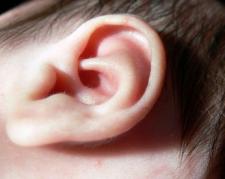Cochlear implants boosted by gene therapy plus tiny LEDs
By Clare Wilson,
New Scientist
| 07. 07. 2016
Can light restore hearing in deaf people? Researchers hope that through optogenetics, they can use micro-LED lights to make better cochlear implants than those used by deaf people today.
Standard cochlear implants function by stimulating nerves using an electrode placed inside the cochlea, a tiny spiral cavity inside the ear. These work, but sounds are distorted and muffled.
That’s because people who aren’t deaf can normally discriminate between about 2000 different sound frequencies, whereas cochlear implants allow only about a dozen to be distinguished. As a result, these implants make human speech sound a bit like that of a dalek, and music can be unpleasant.
Continue reading on New Scientist
Image via Flickr/Jessica Merz
Related Articles
A Review of Exposed by Becky McClain
“Do not get lost in a sea of despair. Be hopeful, be optimistic. Our struggle is not the struggle of a day, a week, a month, or a year, it is the struggle of a lifetime. Never, ever be afraid to make some noise and get in good trouble, necessary trouble.”
— John Lewis
Becky McClain became famous when she successfully sued Pfizer, one of the very largest pharmaceutical and biotech companies. She...
By Josie Ensor, The Times | 12.09.2025
A fertility start-up that promises to screen embryos to give would-be parents their “best baby” has come under fire for a “misuse of science”.
Nucleus Genomics describes its mission as “IVF for genetic optimisation”, offering advanced embryo testing that allows...
By staff, Japan Times | 12.04.2025
Japan plans to introduce a ban with penalties on implanting a genome-edited fertilized human egg into the womb of a human or another animal amid concerns over "designer babies."
A government expert panel broadly approved a proposal, including the ban...
By David Jensen, The California Stem Cell Report | 12.11.2025
California’s stem cell and gene therapy agency today approved spending $207 million more on training and education, sidestepping the possibility of using the cash to directly support revolutionary research that has been slashed and endangered by the Trump administration.
Directors...




